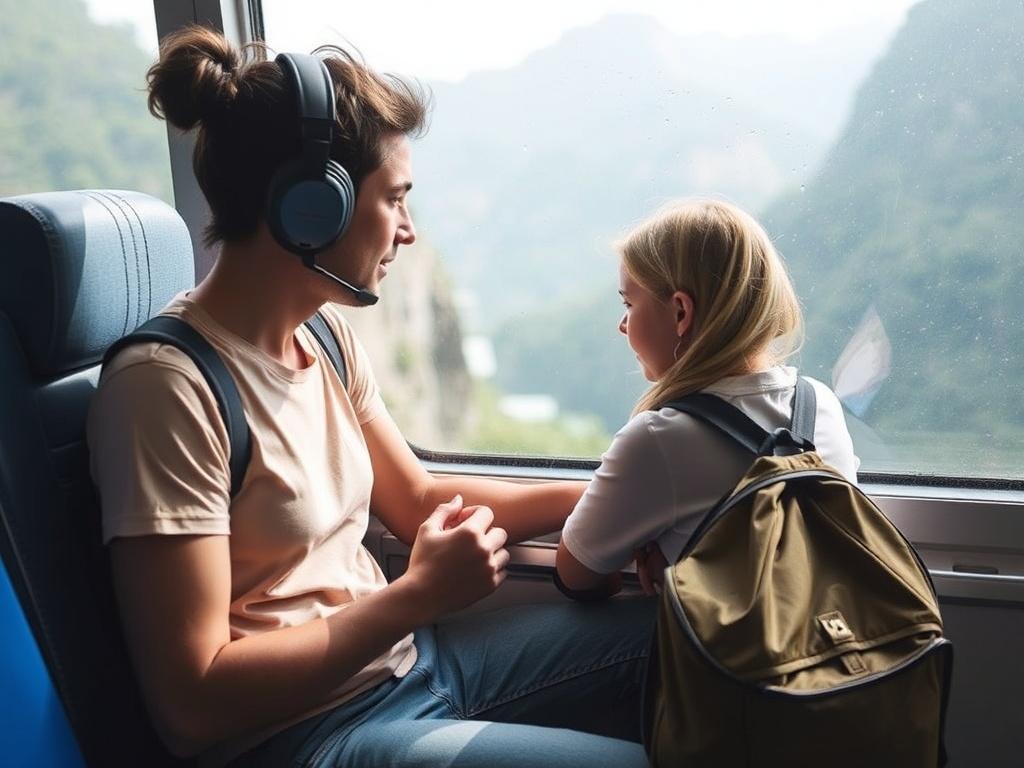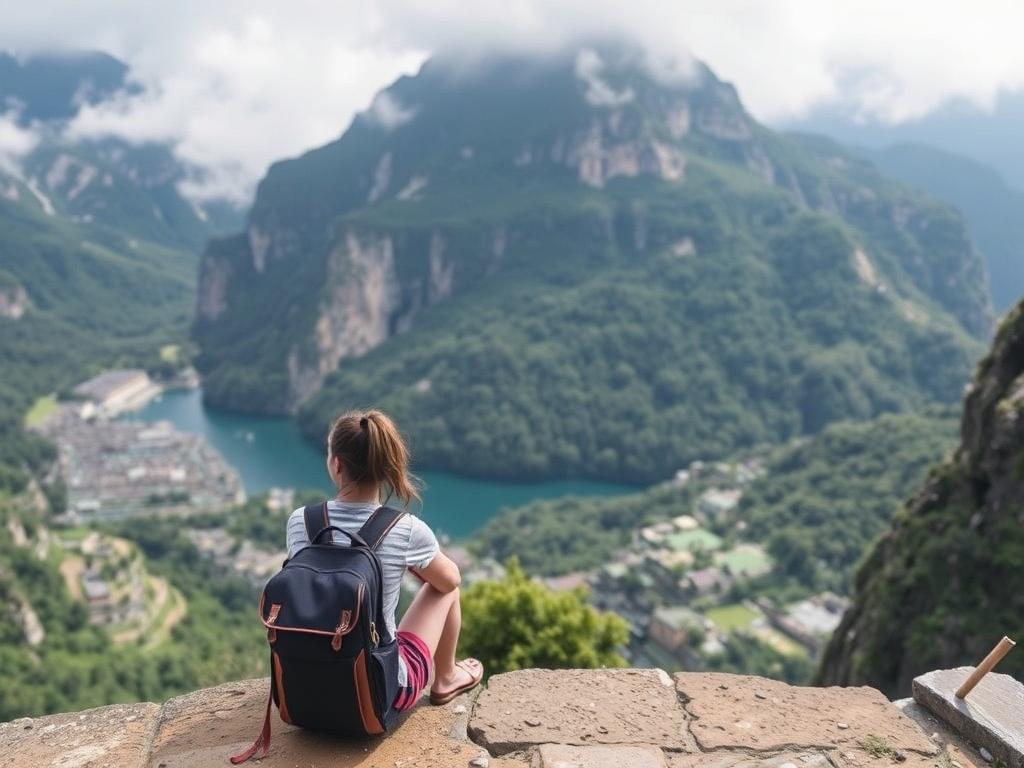Traveling long-term can be one of the most exciting and fulfilling experiences you’ll ever embark on. The thrill of discovering new places, meeting fascinating people, and immersing yourself in different cultures is truly unparalleled. However, along with this incredible adventure comes a challenge many long-term travelers face: loneliness. Whether you’re traveling solo or spending extended periods away from familiar faces, loneliness can sneak in and impact your enjoyment of the journey. But don’t worry—handling loneliness during long-term travel is entirely possible, and in this guide, we’ll explore how to turn solitude into a source of strength and growth.
Loneliness during long-term travel isn’t just about missing your family or friends; it also stems from the lack of consistent social interaction, cultural barriers, and the fatigue of navigating unfamiliar environments alone. Understanding the emotional landscape of loneliness helps you prepare mentally and emotionally. It’s important to acknowledge these feelings rather than suppress them. After all, feeling lonely doesn’t mean you’ve failed as a traveler; it’s a common and natural response to prolonged separation from your support network.
Why Does Loneliness Happen on Long-Term Trips?
Loneliness on long-term travel trips is usually a gradual build-up rather than an immediate reaction. When you first arrive at a new destination, the excitement and novelty can mask feelings of isolation. But as the days turn into weeks and months, the excitement fades slightly, and the lack of stable social connections can become more apparent.
Several key factors contribute to loneliness during long-term travel:
- Distance from loved ones: Being physically away from family and close friends can intensify feelings of homesickness and longing for emotional support.
- Unfamiliar environments: New cities, cultures, and languages can make it hard to connect with others on a deeper level.
- Lack of routine: Regular routines involving social interactions often disappear during travel, leading to unpredictability in social connections.
- Travel fatigue: Constantly moving and planning can take a toll mentally and physically, making it less likely to seek out or enjoy social moments.
Recognizing these triggers helps you anticipate loneliness and equips you to handle it proactively.
Practical Strategies to Handle Loneliness During Long-Term Travel
Fortunately, loneliness doesn’t have to define your travel experience. Many long-term travelers have found effective ways to cope and even thrive while being away for so long. Here are some practical strategies you can implement:
1. Stay Connected with Loved Ones
While being away means physical distance, digital tools have made it easier than ever to stay emotionally close with family and friends. Schedule regular video calls or voice chats to maintain a sense of connection.
Pro tip: Try not to wait until you feel lonely before reaching out. Consistent communication—like sharing daily highlights or photos—helps maintain emotional bonds even across time zones.
2. Join Social Groups and Meet Fellow Travelers
Connecting with like-minded people can be incredibly uplifting. Many destinations have social clubs, language exchanges, meetups, or hostels that serve as community hubs for travelers.
- Hostels and guesthouses: Often organize group activities such as city tours, dinners, or movie nights.
- Meetup apps and sites: Platforms like Meetup, Couchsurfing, or Facebook groups cater to travelers seeking to socialize.
- Workspaces and volunteer opportunities: Join coworking spaces or volunteer locally—great for meeting locals and other travelers.
3. Cultivate Solo Enjoyment
Learning to enjoy your own company is a powerful antidote to loneliness. Plan activities that are fulfilling on your own—reading at a café, hiking a trail, or journaling about your experience.
Many travelers find that solo activities become moments of reflection and self-discovery rather than isolation.
4. Develop a Daily Routine
Having a consistent routine provides structure and a soothing rhythm to long-term travel. Dedicate certain times of the day for exercise, meals, work, or relaxation.
Routines create stability in an otherwise ever-changing environment, reducing the feeling of disorientation and loneliness.
5. Learn the Local Language
Language barriers can deepen feelings of isolation. Even learning basic phrases can empower you to interact more naturally with locals and feel more integrated into the community.
- Small conversations in local languages often lead to unexpected friendships.
- Language learning also provides a fun and engaging mental focus away from loneliness.
Maintaining Mental Health During Long-Term Travel
Traveling for months or even years can strain your mental health if loneliness persists or worsens. Protecting your mental well-being is crucial.
Recognize Warning Signs of Loneliness and Depression
Sometimes loneliness can evolve into deeper mental health issues. Be aware of symptoms such as:
- Persistent sadness or irritability
- Loss of interest in activities you used to enjoy
- Changes in appetite or sleep patterns
- Difficulty concentrating or making decisions
If these symptoms arise, consider seeking professional help or talking openly with trusted friends.
Use Mindfulness and Meditation Practices
Mindfulness helps you stay present and accept emotions without judgment. Meditation, breathing exercises, or journaling can calm your mind and reduce anxiety related to loneliness.
Stay Physically Active
Exercise releases endorphins which boost mood. It doesn’t need to be intense—even daily walks in a park or yoga in your room can help.
How to Build Lasting Connections on the Road
Successful social connections don’t have to be fleeting. There are ways to foster meaningful relationships that last beyond your trip:
1. Be Open and Approachable
A smile, eye contact, or simple greeting can open doors. Show genuine interest in others’ stories and cultures.
2. Invest Time in Friendships
Spend quality time regularly with friends you meet on the road, sharing meals or exploring together.
3. Use Technology to Keep in Touch
Exchange contact details and follow up through social media, messaging apps, or email after parting ways.
4. Consider Slow Travel
Staying in one place for weeks allows deeper immersion and chance to build stronger local and traveler relationships.
Table: Comparison of Loneliness Coping Methods
| Method | Benefits | Potential Challenges |
|---|---|---|
| Staying Connected Digitally | Maintains emotional bonds, reduces homesickness | Time zone differences, internet access issues |
| Joining Social Groups | Increases social interactions, builds new friendships | Initial awkwardness, cultural/language barriers |
| Solo Enjoyment | Fosters self-awareness, reduces dependence on others | Risk of isolation if overused without social balance |
| Developing Routine | Provides stability, improves mental health | Less flexibility, might feel restrictive |
| Learning Local Language | Boosts confidence, deepens cultural connection | Requires consistent effort, can be frustrating at first |
Tips for Specific Types of Travelers

Depending on your travel style and personality, certain strategies work better. Here are some tailored tips:
For Solo Female Travelers
— Trust your instincts when meeting new people
— Join women-only travel groups or events
— Stay in safe accommodations with good reviews
— Make emergency contacts easily available
For Digital Nomads
— Use coworking spaces to socialize
— Attend virtual conferences or webinars
— Schedule regular breaks for social activities
— Balance work and leisure to avoid burnout
For Families or Couples on Long Trips
— Engage in group activities with other families or couples
— Encourage communication to express loneliness without judgment
— Plan meetups with locals or expats for varied social exposure
Creative Ways to Combat Loneliness During Travel

Sometimes, thinking outside the box can transform your experience and dramatically reduce loneliness:
- Start a travel blog or vlog: Sharing your journey keeps you connected with an online community and creates a sense of purpose.
- Take a class or workshop: Cooking, art, dance—learning adds excitement and offers chances to meet others.
- Practice gratitude: Writing daily about things you’re grateful for shifts focus toward positivity.
- Try pet therapy: In some places, visiting animal shelters or renting a pet occasionally can provide companionship.
Overcoming Cultural Loneliness

Loneliness often stems from the feeling of being an outsider in a new cultural context. Embracing cultural differences rather than resisting them can help:
- Respect and learn local customs and etiquette
- Participate in local festivities and traditions
- Find expatriate communities for support and shared experiences
- Be patient with cultural misunderstandings—they are natural and temporary
Balancing Social Interaction and Alone Time
It’s important to strike a balance between meeting people and enjoying solitude. Over-socializing can be just as draining as being lonely. Tune into your energy levels and social needs daily.
- Recognize when you need downtime and allow yourself space
- Don’t feel pressured to accept every invitation; say no when needed
- Choose social interactions that feel meaningful rather than obligatory
Conclusion
Loneliness during long-term travel is a universal experience that can be managed with awareness, intention, and practical strategies. By staying connected with loved ones, actively seeking social opportunities, embracing solo activities, and caring deeply for your mental health, you can transform moments of loneliness into powerful opportunities for growth and connection. Remember, travel isn’t just about the places you visit but about the inner journey you undertake. Overcoming loneliness is part of that adventure—helping you become more resilient, self-aware, and richly connected to the world around you. With patience and creativity, you can make your long-term travel not only a voyage across the globe but a deeply fulfilling and joyful chapter of your life.









